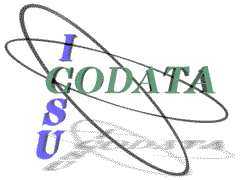Senckenberg Research Institute and Museum, Frankfurt
Botanical Garden and Botanical Museum Berlin-Dahlem
Senckenberg Research Institute and Museum, Frankfurt |
Botanical Garden and Botanical Museum Berlin-Dahlem |
TDWG 2000: Digitising Biological Collections
Taxonomic Databases Working Group, 16th Annual Meeting
Senckenberg Museum, Frankfurt, Germany, November 10-12, 2000
* Institut für Pflanzenvirologie, Mikrobiologie und Biologische Sicherheit,
Biologische Bundesanstalt für Land- und Forstwirtschaft, Königin-Luise-Str.
19, D-14195 Berlin
** Botanische Staatssammlung München, Menzinger Straße 67,
D-80638 München
[Presentation and computer demonstration]
The GLOPP-Project (Global Information System for the Biodiversity of Plant Pathogenic Fungi) started in summer 2000 (see www.glopp.net). One aim of the project is to use the large historical collections of public herbaria, containing tens of thousands of specimens, as a data source. For this purpose the LabelScan tool is developed. It documents original historical data and improves the access to them by facilitating computer-based selective label data transcription and optimising work routines.
The workflow is divided into several steps: (1) An adhesive barcode label is added to the original label of each herbarium specimen. (2) The original label together with the barcode is scanned. The program detects the barcode and automatically uses the barcode as the file name for the image files. In parallel, a file is created, containing the barcode, the path of the generated image file and the storage location within the collection (usually a taxonomic name). The following steps can be carried out without handling any herbarium specimens. (3) Using a linked database, the scanned labels might be classified on the basis of their readability (e.g. typewritten, modern handwriting, historical handwriting), respectively the possibility to be interpreted by technical staff. (4) Only selected information from the label is then transferred into the database by scientific or technical staff.
The programs and databases, which are being developed for the project, are implemented as independent and easily serviceable modules. This will ensure the possibility to exchange some modules with those developed by other projects.
TDWG | Participants | Presentations | Senckenberg Museum | BGBM Biodiversity Informatics
|
This meeting was co-sponsored by the Committee on Data for Science and Technology (CODATA) |
 |
Page editor: W. Berendsohn, wgb@zedat.fu-berlin.de. © BGBM 2000.